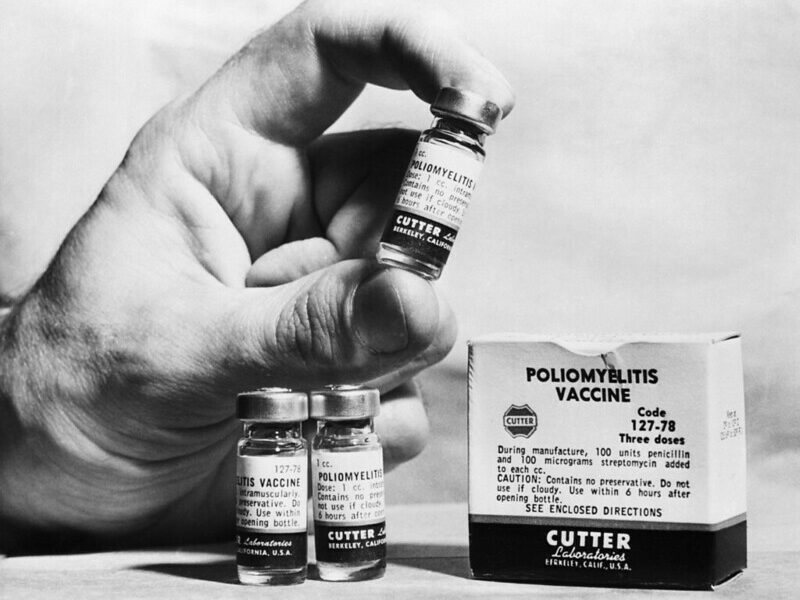In case you haven’t been in a history class in a while, let’s set a scene for you. The year is 1347 and you are at the Messina port in Sicily. Twelve ships just arrived from the Black Sea and you excitedly go to the port to greet them. To your horror, when the ships arrive, most of the passengers were gravely ill or already deceased and were covered with black boils on the skin. Almost immediately the port commanders required the ships to leave but is too late. The lethal pathogen that annihilated the ships has already been transmitted to those waiting on the shore. Seemingly overnight, people who were otherwise healthy were contracting the disease and dying quickly thereafter. Over the next five years, this mysterious disease would kill an estimated 25 million people across Europe, killing one-third of the continent’s population [1]. It wasn’t until years later that it would be called the Black Death.
What you probably did not take out of that lesson is that the plague is still present today. In fact, the United States has a reported average of seven cases of plague a year, typically in the grassland regions of the western United States. While the last documented outbreak of pneumonic plague was documented in 1924, on June 12, 2018, the Central District Health Department reported a confirmed case of bubonic plague in an adolescent boy [2]. It is believed that he contracted the disease at his home in Idaho or from a recent trip to Oregon through a flea bite, but thankfully he is currently recovering at home after seeking medical attention [2, 3]. Around the globe, bubonic plague can be found in South America, Africa and Asia, most notably in Madagascar, where there was an estimated 2,348 cases of pneumonic and bubonic plague from August to November 2017 [4].
The bacteria that causes the plague, Yersinia pestis, is found in rats and fleas and often cycles between the two [3]. When a person is bit by an infected flea or comes in contact with body fluids of an infected rodent, the bacteria can be transmitted to them [3]. Human-to-human transmission occurs when an infected person releases infected droplets into the environment when coughing [3]. Plague infection presents in three forms: bubonic, septicemic and pneumonic. All three forms of the plague have common symptoms of fever, chills and weakness. The bubonic plague, also known as the “Black Death”, involves sudden onset of common symptoms, plus characteristic swollen lymph nodes [5]. Septicemic plague has additional symptoms including abdominal pain, bleeding into the skin and organ and tissue death, especially in the fingers, toes and nose [5]. Pneumonic plague causes rapid pneumonia and can sometimes develop from untreated bubonic and septicemic plagues [5]. Pneumonic plague is the most severe form of plague and is the only form that can spread from person-to-person through droplet transmission [5].
However, we do not need to worry about the Black Death coming on a 14th-century scale just yet. The main difference between the 14th century plague and today is how the advancement of public health impacts its transmission. Surveillance and control measures from organizations like the Center for Disease Control and Prevention (CDC) and the World Health Organization (WHO), allow for possible outbreaks to be recognized and infected animals to be identified to limit human exposure to plague. The differences in basic living conditions and sanitation alone provide a barrier that can drastically reduce plague transmission. The improvement of medical technology, including antibiotics, give those who are infected today a chance to be cured. Water is cleaner and in many regions of the world, there is less contact with flea-carrying rodents. It does require us to be vigilant, however, because we always have the risk of the plague spreading if pneumonic plague goes undiagnosed and untreated. In order to avoid future outbreaks, it is imperative that we limit contact with possible carriers of disease and seek medical attention as soon as symptoms develop to ensure that history does not repeat itself.
Sources:
[1] https://www.history.com/topics/black-death
[2] http://www.cdhd.idaho.gov/dac-hot-topics.php
[3] https://www.cdc.gov/plague/transmission/index.html
[4] http://www.who.int/csr/don/27-november-2017-plague-madagascar/en/
[5] https://www.cdc.gov/plague/symptoms/index.html
